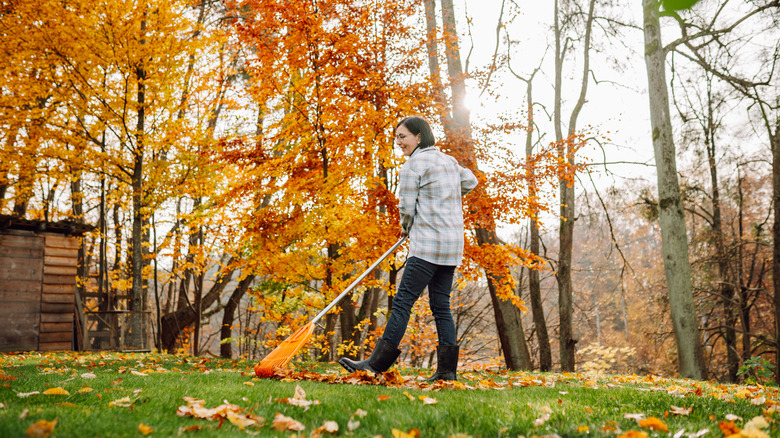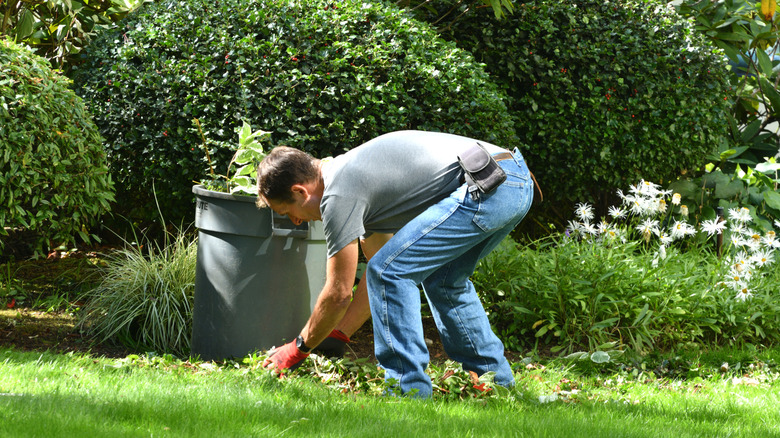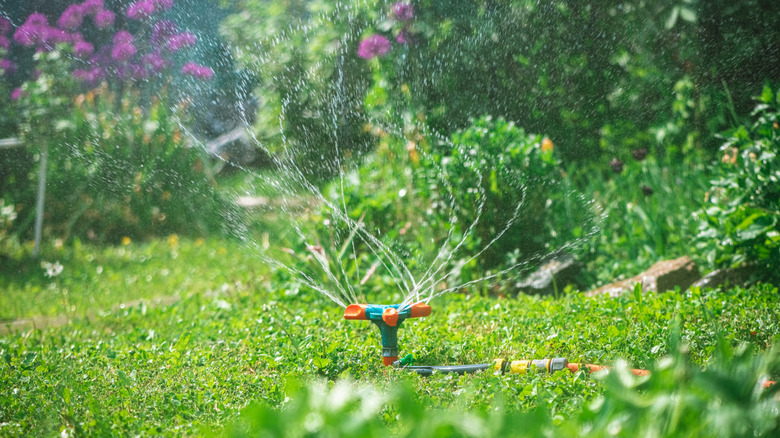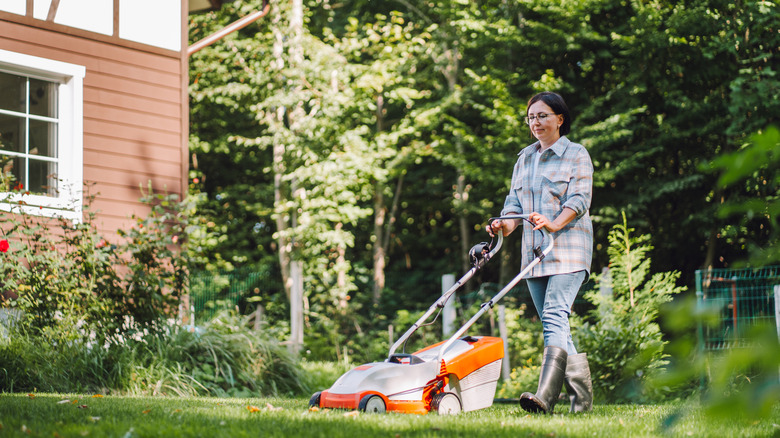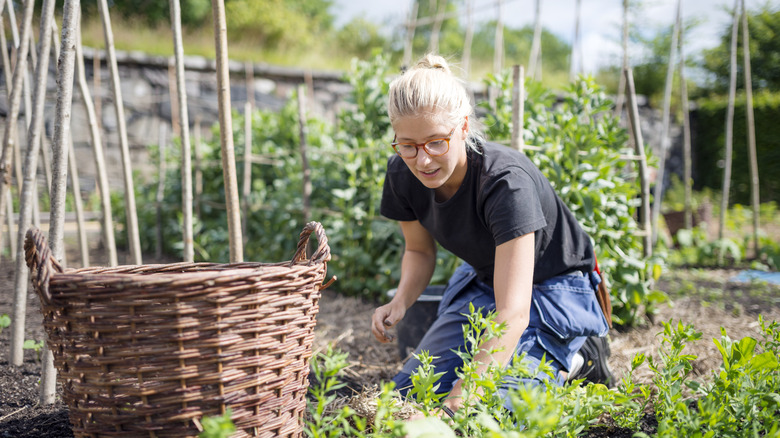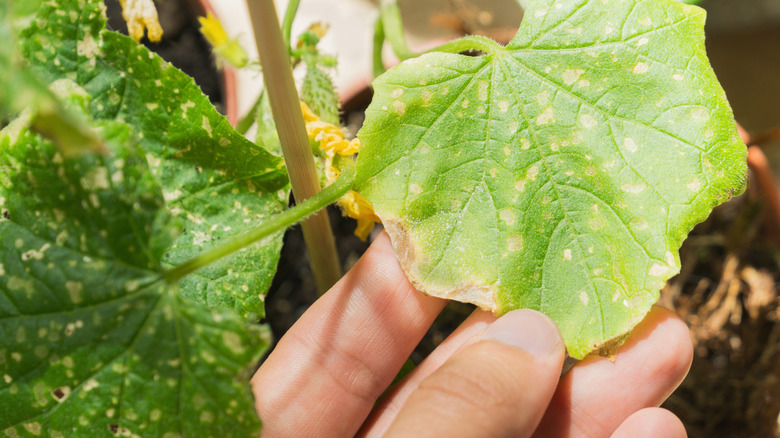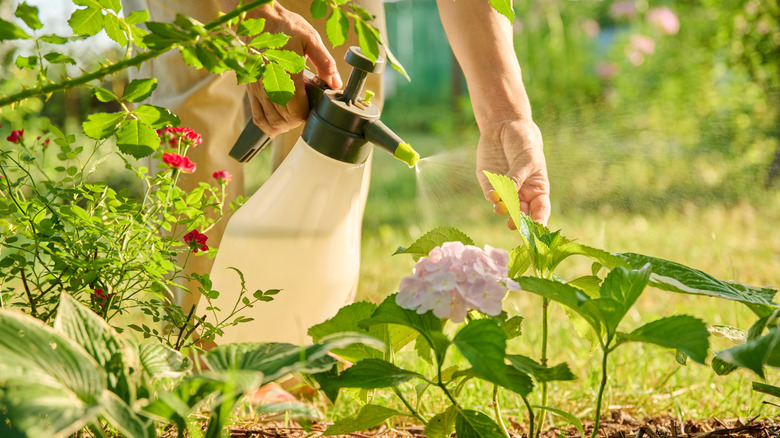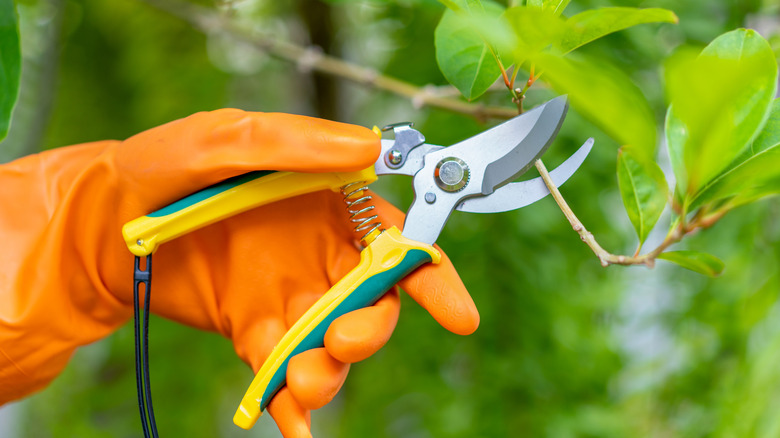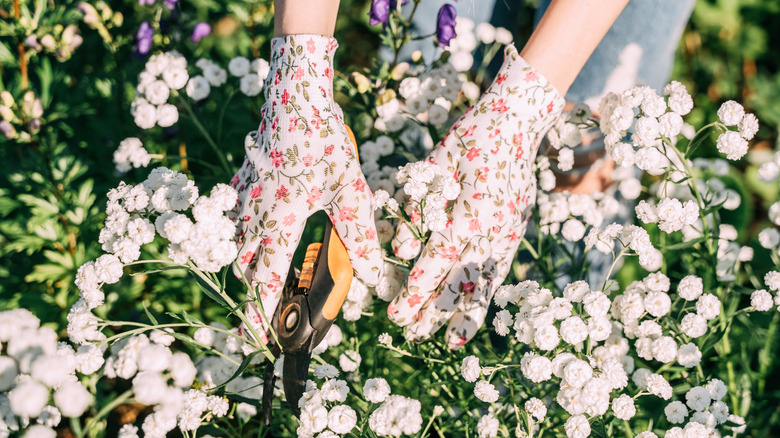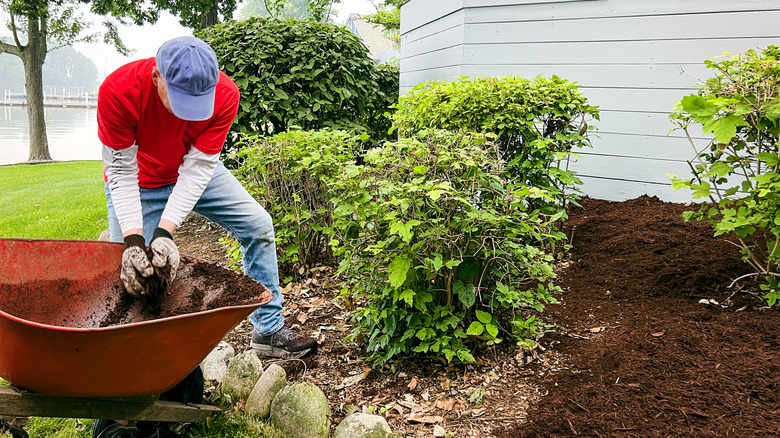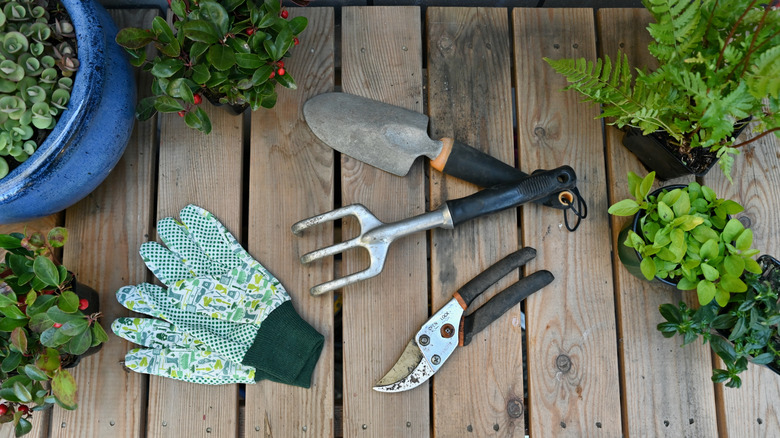10 Weekly Habits For A Pristine Landscape
Tending to landscaping can feel like an overwhelming task to many homeowners. It requires plenty of time, patience, and hands-on maintenance. If you don't stay on top of it, your yard can devolve into an unruly mess faster than you may expect. But before you dial up your local landscaping professional, consider breaking down your yard maintenance tasks into simple weekly habits. From a proper watering schedule to plant health exams, there are plenty of important tasks you can fit into your schedule effortlessly.
With busy weekday schedules, we may aim to complete all of our chores over the weekend. This is unavoidable in some cases. However, you might quickly lose steam and let some tasks slip by the wayside if you don't have a weekly plan. For instance, you may only have time to mow your lawn over the weekend, but once you finish that, you might be too tired to weed or touch up your mulch. Building habits is all about finding ways to incorporate important tasks into your daily life seamlessly. Instead of piling on the tasks for an undetermined someday, find ways to sprinkle these landscaping habits throughout your week. Let's explore 10 habits you can adopt to keep your yard pristine.
Tidy up debris
Every week, schedule a time to walk around your yard and pick up debris. Look for branches, leaves, and other biodegradable waste. This can be as simple as planning a quick walk around your yard at the beginning and end of the week with a bucket and gardening gloves. If you have the room for it, you might want to start composting your yard scraps in a pile or compost bin.
Set a watering schedule
We all know it's vital to properly water your lawn and landscaping plants. Your garden and lawn both need about 1 to 1 1/2 inches of water a week. Sprinkler and drip systems automate this process, but that's not always an option. Lawns usually do best with three 20 minute waterings a week, while garden plot watering can vary vastly. You also need to consider when in the day to water your yard. It's best to water in the early morning or evening to avoid evaporation.
Keep grass the proper height
It's important to mow and manicure your lawn regularly. Grass grows more rapidly in the spring and fall months and is less active when the weather gets hot. You'll need to trim your grass weekly at peak growing season but you can switch to a bi-weekly or as needed schedule in the summer. Be sure to edge your lawn for a pristine finish. If you don't have a proper edger, you can actually use this essential kitchen tool in a pinch instead: a steak knife.
Regular weeding
Weeds are an ever-present nuisance in most gardens. If you're not keeping a watchful eye on your garden plots, these unwelcome plants can overtake your yard. Pick one day every week to scour the entirety of your outdoor space for weeds and pull as you go. The earlier you pluck them out the better. These plants can grow rapidly, outcompeting your garden plants for light, nutrients, and water. Usually hand-weeding will do the trick, but it's not a bad idea to invest in a weeding tool to help with the bigger ones.
Do frequent plant inspections
The presence of pests and disease are unfortunate realities of landscaping. There are an abundance of ways to tackle each issue, but it's easier to deal with them when you catch them early. Pick a day to closely examine all of your plants including all trees and shrubs. Yellow leaves, powdery residue, chewing damage, and leaf spots are just a few signs that there's a pest or disease to address. If you can't identify a pest or disease, ask yourself if you're watering enough, watering too much, or consider conducting a soil test for more insight.
Pest control
If you identify pests during your weekly inspection, you'll need to promptly address the problem. There are many natural ways to rid your plants of pests, such as introducing predator bugs or putting down eggshells around your plants. However, some issues may require a more intensive solution. Many gardeners wince at the thought of spraying their plants. Luckily, there are some organic sprays that aren't as harmful as traditional pesticides. You can also make a basic homemade spray by combining a teaspoon of liquid dish soap with a pint of water.
Pruning where necessary
Pruning is a vital maintenance practice that helps your plants grow more effectively, look more attractive, and stave off pests and disease. Pair this habit with weeding or plant exams. As you move through your yard, use a clean pair of garden shears to remove dead, damaged, or diseased leaves and branches. You can also do a more thorough shaping after blooming periods end. Remember, don't dispose of any diseased, pest ridden scraps in your compost pile.
Deadheading blooms
If you want to keep your flowering plants blooming for longer, add deadheading to your weekly schedule. This is the practice of removing blooms after they're spent but before they go to seed. Since a plant's entire mission is to survive and multiply, this signals that the plant needs to produce more flowers that will eventually ensure the survival of their species. This is a pretty easy maintenance task. Simply pinch or snip off the old flowers at the base. If this leaves behind an unsightly stem, you can snip it off right before the first leaf.
Touch up mulch
Mulch is organic material such as bark, grass clippings, or wood chips used to cover soil. It doesn't just add a polished look to your yard — it also helps keep weeds at bay, maintain moisture, prevent erosion, and much more. While you may do a majority of your mulching in the fall or spring, it's still important to maintain it throughout the year. As you're walking your yard, look for spots that could use some supplemental mulch. As a rule of thumb, your mulch layer should be about 2 to 4 inches.
Organize your gardening station
It's not exactly a pleasant experience doing your landscaping chores if your gardening station is a mess. Whether you store your supplies in a spacious shed or a modest mud room, disorganization can make weekly tasks feel like a slog. Take time to organize and clean your station. Find a dedicated place for all your tools. Sweep out loose soil. Organize your seed packets. Do whatever it takes to cultivate a productive, pleasant work station. If it's helpful, divide your gardening space into "zones" such as a potting station, storage area, and composting space.
